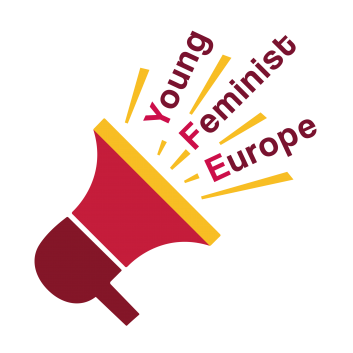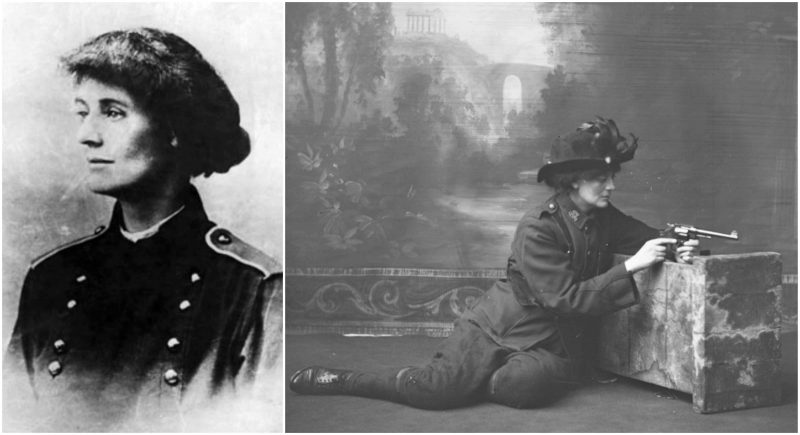Women in Post-Revolution Ireland
At the turn of the twentieth century Ireland appeared to be on the right track to achieving gender equality. Constance Markievicz, a prominent member of the Republican movement, was elected to the House of Commons in 1919, the first woman in both Ireland and the United Kingdom to do so. She later became the first ever female Minister to serve in cabinet under the newly formed Sinn Fein government in Dáil Éireann (Irish parliament).
Women played a crucial role in the fight for Irish freedom both during the 1916 Easter Rising and later in the war for independence. The suffragette movement across both Ireland and the United Kingdom was successful and some women were granted the right to vote in 1918, all women aged 21 and over were granted suffrage four years later. However, after Ireland was granted independence, cultural expectations led to women stepping back from public life and predominantly staying at home as homemakers. The strong presence and power of the Roman Catholic Church was incredibly influential in maintaining this.
The EU stood for social change and human (equal) rights and Ireland had to keep up.
In the newly formed Irish Free State, Prime Minister Eamon De Valera and his Fianna Fáil (one of two main parties in Ireland) cabinet wrote the Irish constitution which was heavily influenced by the Roman Catholic Church and made many references to religion. This led to many restrictions placed on women and their autonomy. Divorce was made illegal and not until a public referenda in 1995 was it narrowly passed to give people the right to divorce. Most notably, is the controversial article 41.2.1° in the constitution that outlines that a woman’s right is in the home: ‘In particular, the State recognises that by her life within the home, woman gives to the State a support without which the common good cannot be achieved.’
Further restrictions were placed on women over the course of the century from various bills being passed in parliament that further restricted women’s rights to employment, bodily autonomy and personal rights. In 1927 an Act was passed exempting women from jury duty and allowing a woman to opt out if she chooses. The sale and importation of contraceptives was banned in 1932. This then led to the Marriage Bar in 1935 being extended to all parts of the civil service and granting the government power to limit the amount of women employed in any industry. This enforced that married female public servants could no longer work.
Ireland joining the European Union
Ireland joined the European Union in 1973, the same year that the Marriage Bar was lifted. Joining the EU was mainly due to economic reasons, Ireland was in a deep recession in the 1970s and was ever dependent on a struggling agricultural sector. But, the deal that Ireland got landed with when they joined went way further than just economics. The EU stood for social change and human (equal) rights and Ireland had to keep up.
Due to Ireland joining the European Union, many amendments were made to the bills that had once prohibited women from participating in public life and this saw the slow but steady increase in women becoming involved in politics, the legal system and many other parts of society. The percentage of women in full time employment began to increase as well. The Equal Pay Directive in 1975 stated that sex discrimination on all bases of pay had to be eliminated; in 1976 another directive was passed that prohibited discrimination on the basis of sex and marital status in reference to promotion or dismissal. Other directives were the Social Security Directive in 1979 and later the Pregnant Workers Directive in 1992 that ensured that women had the statutory right to maternity leave for at least 14 weeks.
The revival of feminist activism due to the recent referendum in Ireland is only the beginning of a new generations fight for gender equality.
This led to a new found engagement from many women across the country in all aspects of public life. Máire Geoghegan-Quinn was appointed to a ministerial position in 1979, the first woman since Constance Markievicz sixty years later. In 1990 Mary Robinson was elected as the first female President of Ireland. Mary McAleese followed in 1997 and this was the first time in the world that another woman consecutively was elected as Head of State. During this time there was a major revival of the women’s movement in Ireland. In 1973, the Council for the Status of Women was established.
In the 46 years that Ireland has been a member, the country has come a long way. From the Catholic archaic laws of the twentieth century to the 66.44% that voted yes to repealing the 8th amendment in the 2018 Referendum. This granted women the right to choice in regards to abortion. Without a lot of the external funding and legal rights the EU granted, Ireland would have struggled to keep up both socially and economically with their European counterparts. The European Union has been pivotal in progressing women’s rights in Ireland. The revival of feminist activism due to the recent referendum in Ireland is only the beginning of a new generations fight for gender equality. In this time of political unrest, now more than ever membership of the EU is important in protecting women’s rights and that is why we need to continue to support this by voting for feminist candidates in May.





![Czech Republic: Politics remains a male domain – Politika jako stále mužská záležitost [EN/CS]](https://www.youngfeminist.eu/wp-content/uploads/2016/04/gender-quota-752x501-150x150.jpg)
A Lucy, a chara
Comhghairdeachas don alt seo.
ACH na Dean dearmaid go bhuil na Se Contaethe faoi smacht Sasana go foill,nach bhfhuil ceart ag “gays” posadh, agus ta cosc ar ghinmhilleadh.Ni ceart go cuir la ceile.Adh mor
[…] A History of Women’s Rights in Ireland: What has the European Union done for us? […]